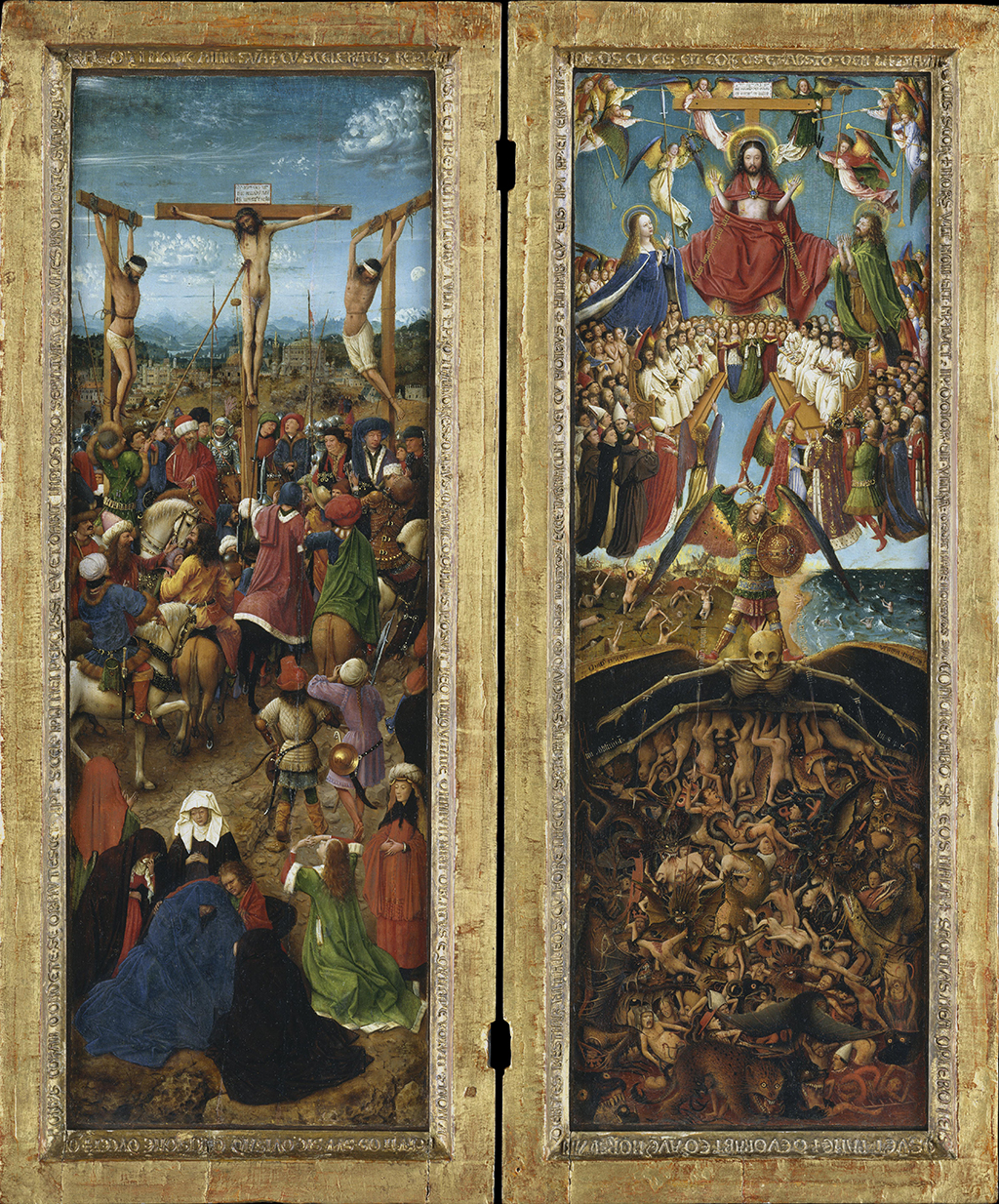The Last Judgement by Jan van Eyck forms the right hand panel to a two-piece project which Jan van Eyck completed on commission for a private, devotional requirement. He received help from his assistants on both panels, but completed the key areas himself.
The content of this piece is in line with many other artists' interpretations of this common religious theme, with a separation between those waiting to be judged and those who have already received their fate. The Last Judgement is intended as a means to reminding humanity of the consequences of leading morally corrupt lifestyles and hopes to force us into line through the threat of punishment in our afterlife. The judgement delivered then leads us to heaven or hell, which are key parts of the Christian religion at which also appear regularly within art of the 15th and 16th century. We all aware of Michelangelo's Last Judgement mural which has become known as one of art history's most iconic contributions, but there is also considerable technical merit within van Eyck's version as well.
The horrors of those who have lived incorrect lives are shown in the bottom half of the painting, with the shock that we feel intended to lead us away from such paths. The overall commission was intended as a means by which the owner could reflect on both sides of this piece in their own privacy and perhaps pray sometimes. Only those wealthy enough could afford to order such beautiful work, and so the owner would surely have been well connected in order to even make contact with the artist in the first place. Van Eyck became so much in demand that a workshop would become the only way in which he could satisfy the projects being requested of him, whilst also supervising in good detail so that his own reputation would not become tarnished by the mistakes of his assistants.
Head to the impressive venue of the Metropolitan Museum of Art in New York, USA which holds both panels together and will normally be on display, despite the huge collection of work that they possess. The display area is limited and so only the best items will be out on show permanently, whilst the rest can be rotated from time to time, with some loaned out for exhibitions elsewhere as well. They host a number of related items such as Thomas Cole's The Oxbow, Édouard Manet's Boating, Mme. Charpentier and her Children by Pierre-Auguste Renoir and also Paul Gauguin's The Midday Nap. You will see from that small selection that their list of European art is fairly diverse, covering everything from the middle ages and Gothic styles all the way up to the start of the 20th century. No doubt they will continue to replenish the collection over the next few years too via both private purchases at auction as well as the continued donations that generous patrons offer from time to time.



 Jan van Eyck.jpg)

